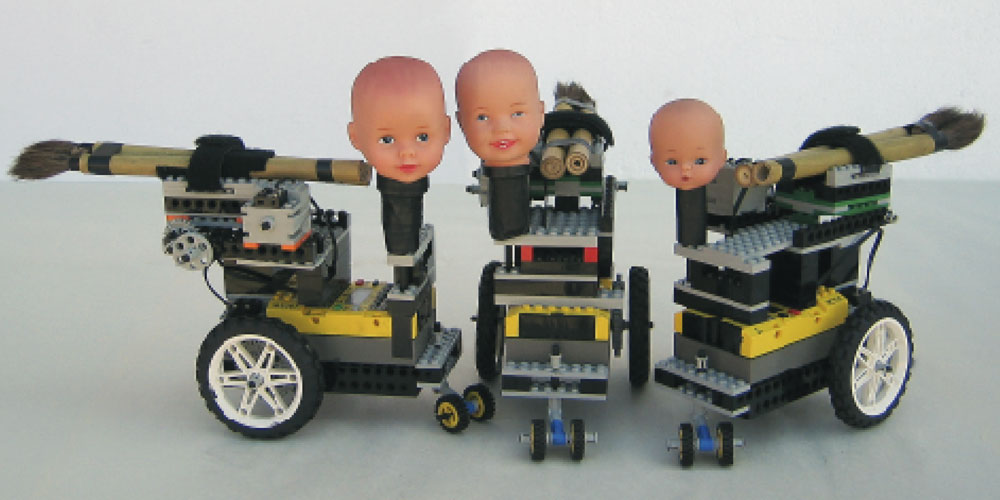Only humans are inspired to create. Aesthetic expression is the action triggered by this inspiration. Art is its result, the special product of a divine process. Machines are neither human nor divine. But ironically, the markings which are made by the machine’s activity very much resemble the art of human artists. A contradiction results.
The Sumi-ebots project also underscores a phenomenon which increasingly pervades the artmaking process and contemporary culture at this time in history; namely the phenomenon of technology functioning both as mediator and separator between the artist and the work. No longer manifesting itself through the immediacy of physical gesture made by the artist, contemporary work often utilizes a great deal of complex technology, thereby creating a wide gap between the artist and the expression itself. The sumi-ebot project widens this gap to the extreme, allowing the technology to function as an autonomous entity in making art. The bot is the creator; a proxy artist, no longer requiring the presence of a human.
Process
Sumi-ebots do not simply repeat a preset pattern over and over. Every painting generated conforms to the sumi-ebot’s style, but is unique. The style of painting is reminiscient of a Zen painter making a spontaneous mark with one continuous gesture of the sumi-e brush.
Sumi-ebots can perform as single artbots or as a group. In the case of group “collaborations”, each sumi-ebot communicates with the next via infrared transmission. Once the bot has finished its mark, it signals the next bot to begin. Thus a chain of sumi-e bots can sequentially paint marks along a scroll, in the tradition of Japanese brush painting.
The sumi-ebot project was originally developed by Eva Sutton and Sarah Hart in the context of the “Interactive Spaces” Class at the Rhode Island School of Design. Their paintings first appeared in public at the 2002 ArtBots show in New York.
Artists’ statement
We are driven to do this. We don’t know why. We exist to paint. When we are powered up, we can think of nothing else but to dip our brushes and make marks. It’s our life. In the Japanese tradition of Sumi-e painting we use bamboo brushes and black Sumi-e ink. In fact, Sumi-e means “black ink painting”—black ink on white paper, simple elegant and serene. An economy of brush work is used to communicate the essence of the subject.
With regard to our technique, we’d like to quote the painter Jackson Pollock in a statement he made in 1947 about his process:
“On the floor, I am more at ease, I feel nearer, more a part of the painting, since this way I can walk around in it, work from the four sides and be literally ‘in’ the painting.”
—The Sumi-ebots

